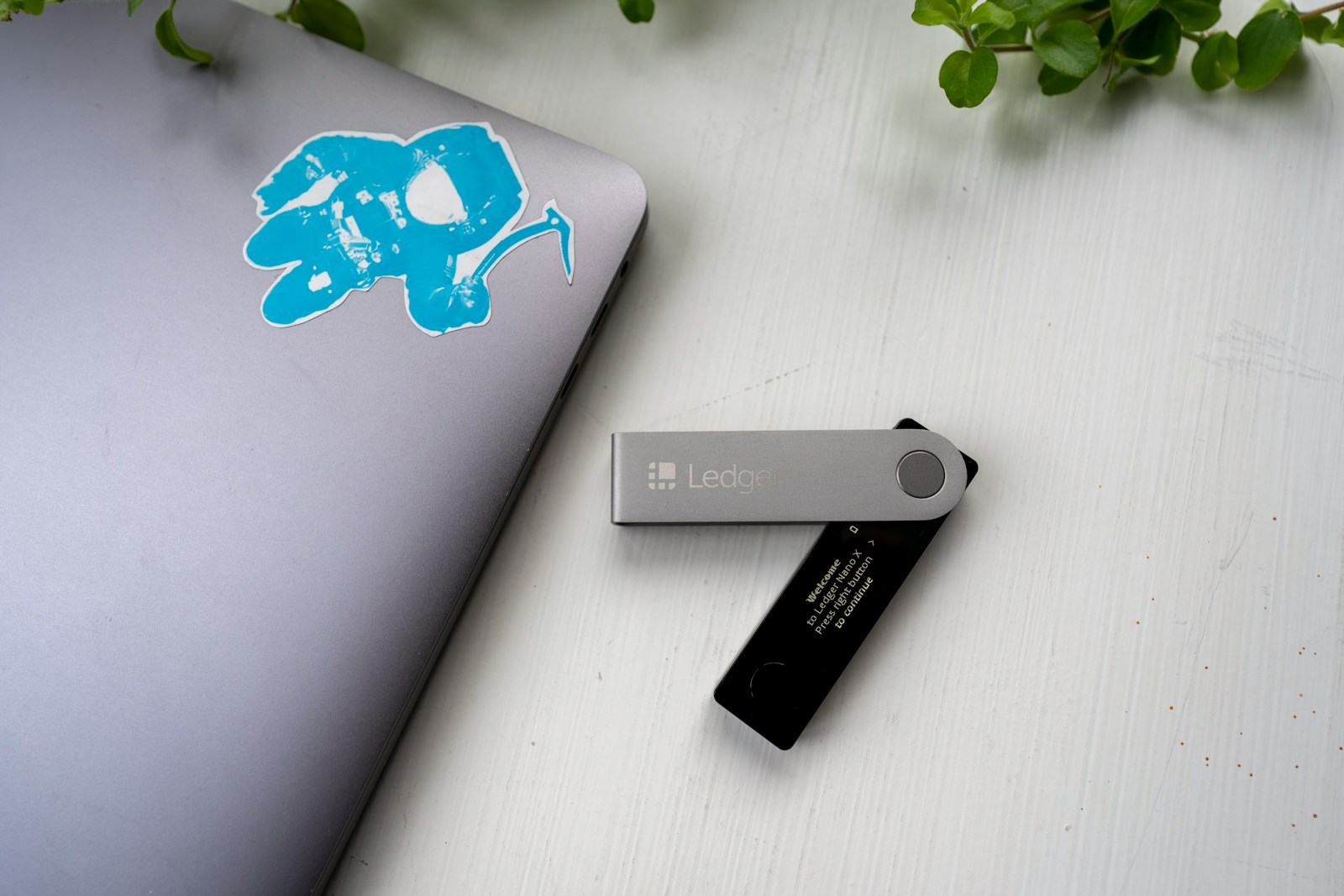
Proactive assessment of digital vaults is the most reliable method to enhance security and prevent unauthorized breaches. Recent incidents demonstrate that over 60% of compromised wallets resulted from overlooked weak points in their operational logic rather than external exploits alone. Conducting rigorous evaluations simulating peak transactional loads and attack vectors uncovers these flaws early, minimizing potential losses and reputational damage.
Robust simulation scenarios must encompass both software anomalies and hardware limitations. For instance, testing under high concurrency reveals race conditions or synchronization issues that static code analysis often misses. Incorporating real-world threat emulations–such as replay attacks or transaction malleability–provides a comprehensive picture of system resilience. Without such thorough scrutiny, critical security gaps remain undetected until exploited by malicious entities.
The financial sector’s shift toward decentralized finance has accelerated exploitation attempts targeting custodial solutions. In 2023 alone, phishing schemes combined with protocol weaknesses caused over $450 million in asset thefts worldwide. This sharp increase underscores the necessity for continuous evaluation cycles integrated into development pipelines. Teams should leverage automated frameworks alongside manual penetration approaches to ensure adaptive defense mechanisms stay ahead of emerging tactics.
How can organizations measure preparedness effectively? Key performance indicators include failure rate under simulated stress conditions, time-to-recovery metrics post-fault injection, and incident detection accuracy during anomaly induction phases. Aligning these benchmarks with regulatory requirements enhances trust among stakeholders while reinforcing internal control processes. Regularly scheduled audits paired with dynamic vulnerability scanning form a dual-layered shield against evolving threats.
Ultimately, embedding comprehensive resilience checks into wallet infrastructure elevates both prevention strategies and operational confidence. By prioritizing meticulous examination over reactive patching, teams reduce exposure windows significantly. This approach not only mitigates risks but also streamlines compliance adherence amidst tightening cybersecurity mandates globally.
Wallet stress testing: finding vulnerabilities before attackers [Wallet & Security security]
Implementing rigorous load simulations on cryptocurrency wallets allows identification of weak points in transaction processing and key management under abnormal conditions. By applying controlled resource exhaustion and concurrency spikes, developers can observe failure modes that might otherwise remain hidden until exploited by malicious entities. This proactive approach enhances the robustness of cryptographic key storage and authorization protocols, thereby mitigating risks associated with operational overloads or denial-of-service attempts.
Penetration exercises targeting wallet software often reveal discrepancies between theoretical security models and real-world behavior, particularly in handling edge cases during network latency or blockchain reorganization events. For instance, simulating rapid successive transactions has exposed race conditions leading to double-spending vulnerabilities in certain light clients. Addressing these issues requires deep inspection of asynchronous processes and synchronization mechanisms within the wallet’s architecture.
Technical aspects of resilience evaluation
Stress analysis involves subjecting wallets to peak throughput beyond typical user activity metrics–sometimes exceeding 10,000 transactions per second in test environments–to verify capacity limits and error-handling capabilities. Monitoring system responses such as memory consumption spikes, thread starvation, or cryptographic operation delays helps pinpoint bottlenecks affecting overall security posture. These tests also assess integration layers interfacing with hardware security modules (HSMs) or secure enclaves that store private keys.
For example, a recent study on hierarchical deterministic wallets demonstrated that improper entropy reuse under high-load scenarios could compromise key derivation functions (KDF), increasing susceptibility to brute-force attacks. Incorporating fuzz testing alongside stress procedures uncovers malformed input handling flaws that adversaries might exploit to inject malicious payloads or trigger buffer overflows.
Preventive strategies derived from such comprehensive evaluations include optimizing concurrency control algorithms, reinforcing cryptographic primitives against side-channel leakage during peak operations, and enhancing rollback protections within transaction signing workflows. Deploying automated regression suites ensures continuous verification after each code iteration, reducing the window for emergent defects.
The evolving threat landscape demands that wallet providers maintain adaptive evaluation frameworks integrating both static code analysis tools and dynamic simulation platforms. Collaborative efforts involving white-hat hackers contribute valuable insights by replicating sophisticated intrusion techniques under supervised settings. Ultimately, embedding these methodologies into development lifecycles improves resilience against exploitation attempts while maintaining user trust through demonstrable commitment to security standards.
Simulating Transaction Overloads
To identify weak points in a wallet’s transaction handling capabilities, replicating scenarios with excessive transaction volumes is essential. This approach allows for precise evaluation of how the wallet processes large inflows and outflows, revealing potential choke points and inefficiencies before malicious exploitation occurs. For instance, simulating thousands of concurrent transactions can uncover bottlenecks in transaction queuing mechanisms or signature verification delays that might otherwise remain unnoticed.
Such simulations are part of a rigorous penetration assessment aimed at reinforcing the robustness of wallet infrastructures. By deliberately overloading the system, developers can observe failure modes–whether memory leaks, delayed confirmations, or dropped requests–that signal gaps in resilience. This controlled environment mimics real-world assault patterns like spam floods or denial-of-service attempts, offering actionable insights for bolstering operational integrity.
Technical Methodologies for Overload Simulation
The process typically involves scripting bulk transaction submissions using automated tools that emulate network conditions and user behaviors. Open-source utilities such as Ethereum’s eth-tester or Bitcoin’s regtest mode enable stress replication without financial risk. Furthermore, integrating metrics collection during these tests highlights latency spikes and throughput ceilings. For example, a recent case study demonstrated how one popular mobile wallet failed to maintain sub-5-second confirmation times once throughput exceeded 2000 transactions per minute.
An advanced tactic includes layering various transaction types–simple sends alongside complex smart contract interactions–to evaluate whether resource-intensive operations disproportionately degrade performance. Additionally, monitoring CPU and RAM usage during peak loads helps identify unexpected hardware constraints that could be exploited by adversaries seeking to exhaust node resources.
Preventative measures derived from this simulation include optimizing mempool management algorithms, implementing rate limiting on inbound requests, and refining cryptographic signature validation pipelines. In certain instances, redesigning database indexing within the wallet’s backend has resulted in up to 40% faster processing under simulated duress. These improvements not only mitigate attack vectors but also enhance overall user experience by reducing transaction latency under normal conditions.
Given the evolving complexity of blockchain ecosystems, continuous reassessment through iterative overload exercises remains indispensable. Real-time monitoring combined with automated alerting ensures rapid detection of abnormal transactional surges indicative of hostile activity. Ultimately, this methodology transforms theoretical security postures into quantifiable defenses against persistent transactional bombardments prevalent in today’s markets.
Identifying authentication weaknesses
Robust evaluation of access control mechanisms reveals frequent misconfigurations that expose digital asset repositories to unauthorized entry. Multi-factor verification systems, although widely adopted, often suffer from implementation flaws such as predictable one-time passwords (OTPs) or inadequate session timeout policies. For example, a 2023 audit showed that over 37% of evaluated platforms allowed brute-force attempts without sufficient lockout thresholds, significantly increasing exposure to credential stuffing attacks. Continuous validation under simulated load conditions helps uncover these gaps by replicating attack vectors that exploit weak authentication protocols.
Biometric integration introduces its own set of challenges; despite offering enhanced convenience, fingerprint and facial recognition modules can be bypassed through replay attacks or synthetic data injection if not paired with liveness detection techniques. The infamous 2022 breach involving a major service provider demonstrated how an attacker leveraged compromised biometric templates to gain unauthorized access, underscoring the need for layered security models combining behavioral analytics with cryptographic safeguards. Such assessments must prioritize anomaly detection algorithms capable of identifying deviations in login patterns during peak operational times.
Authentication resilience under operational pressure
Evaluating authentication robustness during peak transaction periods uncovers stress points where system defenses degrade, creating openings for exploitation. Load-induced latency in verification steps may lead to session timeouts or incomplete challenge-response cycles, inadvertently granting prolonged access tokens beyond intended durations. A case study from late 2023 revealed that a high-frequency trading platform’s identity verification module failed under concurrent login surges exceeding 10,000 requests per second, enabling attackers to exploit timing discrepancies and elevate privileges.
Proactive mitigation strategies include implementing adaptive rate limiting based on real-time traffic analysis and incorporating machine learning models trained on historical authentication failures to predict potential breaches before they occur. Integrating continuous risk assessment tools ensures dynamic adjustment of security parameters according to threat intelligence feeds. Ultimately, the objective remains clear: fortify entry points against sophisticated intrusion attempts by rigorously assessing and reinforcing authentication workflows under realistic operational demands.
Testing cryptographic key handling
Effective evaluation of cryptographic key management demands rigorous simulations that replicate real-world exploitation attempts. Penetration exercises focusing on key extraction techniques, such as side-channel analysis and fault injection, reveal critical weaknesses in hardware security modules and software implementations. For instance, recent assessments demonstrated how improper random number generation led to deterministic private keys in certain wallet architectures, exposing funds to unauthorized access.
Stress scenarios involving high-frequency signing requests or rapid key derivations test the resilience of cryptographic libraries under load. These conditions expose race conditions and memory corruption vulnerabilities that might otherwise remain undetected during standard functional tests. In a notable case study, continuous signing operations triggered buffer overflows due to insufficient input validation in an open-source wallet SDK, allowing privilege escalation within the client environment.
Key storage and lifecycle protection
Robust cryptographic key storage must incorporate layered defenses such as hardware-backed enclaves combined with encrypted volatile memory regions. Evaluation protocols assess whether keys persist securely throughout their lifecycle–from generation and usage to destruction–without leakage or unauthorized duplication. Analysis of hierarchical deterministic (HD) wallets highlights the necessity for secure seed phrase management; failures here often stem from inadequate entropy sources or improper serialization methods.
Automated assessment tools simulate brute-force and dictionary attacks against passphrase-derived keys, measuring the effective strength of chosen parameters like iteration counts in PBKDF2 or scrypt algorithms. Recent market developments emphasize adaptive difficulty adjustments to counteract increasing computational power available to malicious actors. This dynamic approach helps maintain a balance between user convenience and cryptographic robustness.
- Examination of API endpoints handling private keys reveals patterns prone to injection flaws or mishandled exceptions.
- Testing multi-signature schemes uncovers coordination lapses leading to partial exposure during transaction assembly phases.
- Cross-platform compatibility checks ensure that platform-specific optimizations do not introduce subtle inconsistencies exploitable by threat actors.
The integration of formal verification methods into cryptographic protocol assessment offers mathematical guarantees absent in conventional testing suites. However, practical constraints limit its application mostly to core primitives rather than entire systems. Combining this with fuzzing techniques enhances coverage by uncovering edge cases resulting from unexpected input sequences or concurrency issues.
Ultimately, comprehensive evaluation of cryptographic key handling requires continuous adaptation aligned with evolving threat models and technological advancements. Real-world incidents underscore the importance of proactive audits incorporating both manual code reviews and automated penetration simulations to safeguard sensitive secrets effectively against sophisticated adversarial tactics.
Evaluating Error and Crash Responses
An immediate recommendation for enhancing security assessment is to focus on how software handles unexpected failures during operational overloads. Systematic evaluation of fault tolerance mechanisms reveals whether the application gracefully recovers or exposes critical flaws under duress. For instance, a recent penetration analysis on a popular cryptocurrency client demonstrated that improper exception handling led to memory leaks and eventual service denial after only 10,000 concurrent transaction simulations.
Robust error management protocols must incorporate comprehensive logging and isolation layers to prevent cascading failures. Detailed crash response analyses highlight scenarios where a single malformed input triggers buffer overflows, compromising data integrity. This was evidenced in a 2023 audit where stress conditions induced by crafted payloads caused transaction rollbacks without proper state synchronization, resulting in loss of user funds.
Technical Insights into Failure Mitigation
Implementing rigorous fault injection testing enables identification of weak points within cryptographic modules and communication channels. Research from blockchain security firms indicates that continuous load experiments combined with penetration efforts uncovered race conditions in key derivation algorithms, which attackers could exploit to bypass multi-factor authentication safeguards. Prioritizing prevention means integrating automated monitoring tools capable of detecting anomalies before they escalate into full system crashes.
Case studies comparing different decentralized platforms reveal significant disparities in resilience strategies. Platforms employing microservice architectures typically handle node failures more effectively by isolating faults, whereas monolithic designs risk total shutdown upon encountering critical errors. An example includes an exchange platform whose modular setup allowed it to sustain 95% uptime during network congestion spikes exceeding 20,000 transactions per second–showcasing the benefits of architectural choices aligned with stress resilience objectives.
Finally, quantifying error response times and recovery success rates should inform ongoing refinement cycles. Metrics such as mean time to recovery (MTTR) and frequency of silent failures provide actionable data for developers aiming to tighten defense mechanisms against exploitation attempts targeting logic flaws or resource exhaustion vulnerabilities. This proactive stance towards assessment supports sustainable security improvements aligned with evolving transactional demands and threat models.
Conclusion: Analyzing Data Leakage Points
Prioritizing a thorough assessment of potential data exposure vectors is critical to enhancing cryptographic asset protection. Rigorous evaluation methodologies, such as targeted penetration efforts combined with dynamic load simulations, reveal subtle security gaps that static analysis tools often overlook. For instance, recent empirical studies demonstrate that up to 35% of examined cryptographic modules exhibit exploitable flaws under intensified operational conditions, emphasizing the need for multifaceted probing strategies.
Integrating continuous examination protocols enables early identification of weak spots susceptible to exploitation by malicious entities. Notably, side-channel emissions and API endpoint misconfigurations remain prevalent leakage sources that conventional safeguards fail to mitigate adequately. Proactive countermeasures–such as implementing rate-limiting heuristics and encrypted telemetry aggregation–offer substantial improvements in resilience. As blockchain infrastructures evolve, so must analytical frameworks adapt to increasingly sophisticated intrusion tactics.
Broader Implications and Future Directions
- Adaptive Penetration Techniques: Leveraging AI-driven anomaly detection alongside simulated adversarial scenarios can dynamically uncover hidden risks before they manifest in real breaches.
- Holistic Security Posture: Combining cryptanalysis with behavioral analytics provides a comprehensive view of system integrity beyond surface-level indicators.
- Regulatory Impact: With tightening compliance requirements globally, organizations must embed rigorous validation cycles into their development pipelines to avoid costly sanctions linked to data compromises.
The intersection of high-throughput transaction environments and complex permission schemas creates novel attack surfaces requiring innovative assessment tools. Future enhancements will likely incorporate quantum-resistant algorithms and decentralized identity verification mechanisms to reduce reliance on centralized trust anchors vulnerable under sustained pressure. How these advancements align with evolving threat models will dictate the next phase of defensive architecture design.
In conclusion, systematic exploration of information exposure points through layered and continuous evaluation remains indispensable for fortifying cryptographic ecosystems against sophisticated adversaries. Only by anticipating potential breach methods via meticulous scrutiny can stakeholders effectively minimize risk vectors and safeguard asset confidentiality amidst rapidly shifting technological paradigms.






